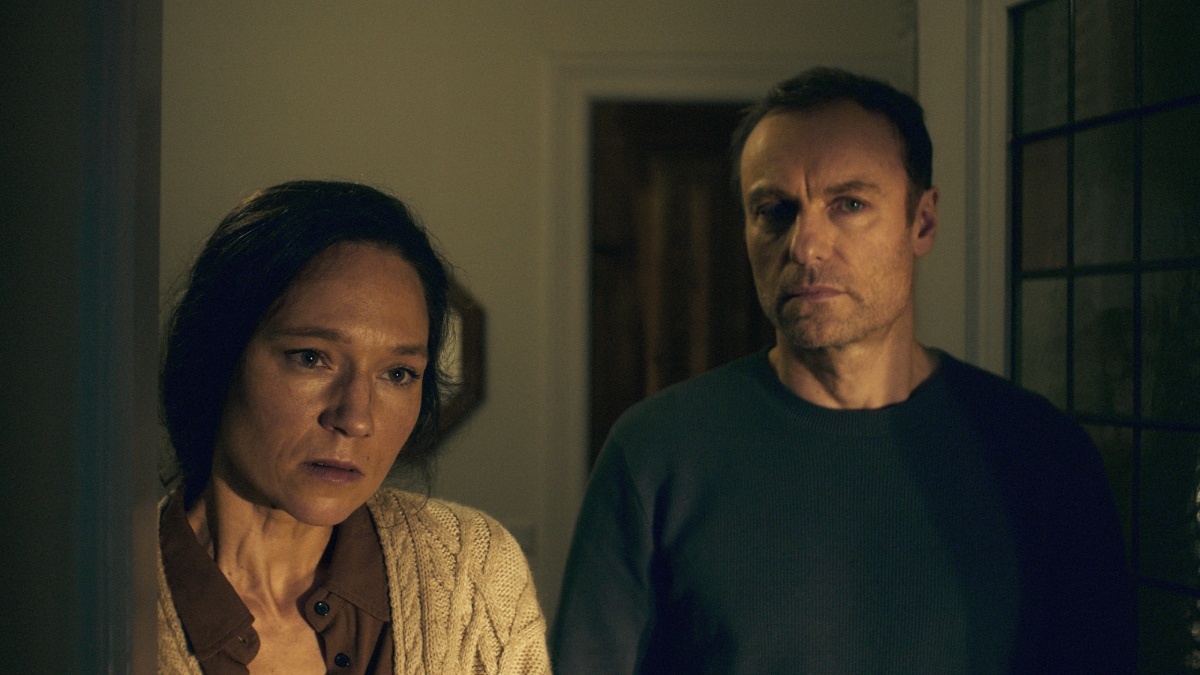Freely utilizing a non-linear structure, with mixed results, Ronny Trocker’s sophomore feature, “Human Factors,” is a compelling puzzle-box, showcasing a botched home robbery from five different points-of-view, that never fully synthesizes its twisty structure with a realized narrative. Filmed with an ironic detachment that recalls the work of Michael Haneke, “Human Factors” labyrinthian time-jumps, which freely move backward and forward at a moment’s notice to disorienting results, are more interesting to unpack after the credit roll than they are to keep track of at the moment. Despite being a strong showcase for actors Sabine Timoteo and Mark Waschke, Trocker’s derivative feature suggests bright things ahead for the filmmaker, if only he can streamline his narrative trickery.
READ MORE: 25 Most Anticipated 2021 Sundance Film Festival Premieres
Beginning as a well-off French/German family escapes to the Belgian sea, with Nina (Timoteo) and Jan (Waschke) dragging along their children, teenage Emma (Jule Hermann) and younger Max (Wanja Valentin Kube), who takes his pet rat, Zorro, along for the trip. Almost immediately, as Jan goes to the store to get groceries, Nina witnesses a home invasion, telling the police that the bungled robbery might have something to do with Jan’s decision to have their co-run ad agency take on an unnamed political party, a decision that he made without consulting her. With only Zorro missing, the family quickly unites in the aftermath, only to further splinter as Trocker jumps back in time to explain the origins of the family’s fracturing relationship, and further showcase how the invasion accelerates the family’s disintegration.
READ MORE: The 100 Most Anticipated Films Of 2021
“Human Factors” jumps around so often that it’s never immediately clear where we are, though the film circles back to the invasion, beginning with Jan’s perspective before repeating the scene four other times, showcasing where each family member was during the moment (and another perspective best left unspoiled). Yet for a film so invested in the inner-workings of a family, each character is often rendered as hollow, reduced to a singular trait. Jan is a workaholic, while Nina, who freely switches between speaking French and German in the film, is unhappy living in Germany. Add in some teenage discontent for Emma and “Human Factors” never utilizes its, admittedly interesting, structural choices to add anything to these characters. While its recursive approach might highlight the stasis that the family is stuck in, it also traps viewers in a time loop that often sacrifices progress for temporal sleight of hand.
Yet, “Human Factors” showcases a director with a succinct vision, as his roaming camera, with the aid of cinematographer Klemens Hufnagl, moves through the expansive house as each family member stakes out their own section, literalizing their disconnection. While in Germany, the family’s apartment sits next to train tracks, with the train passing by in regular intervals, again suggesting the divide between progress and recursion. The film is full of these visual metaphors, as Trocker hammers home the theme of a family in crisis in as many different ways as possible. By the time we get to the third or fourth, depending on one’s patience, loop where we revisit the home invasion, the point has been made abundantly clear.
While Trocker attempts to connect the form to the content of the film, he gets lost in his formalist conceits, never creating fully realized characters to hold the weight of his structural choices. While “Human Factors” is a fascinating experiment in non-linear storytelling, it’s a routine portrait of a fragmenting family. [C+]
Follow along with all of our coverage of this year’s Sundance Film Festival here.





